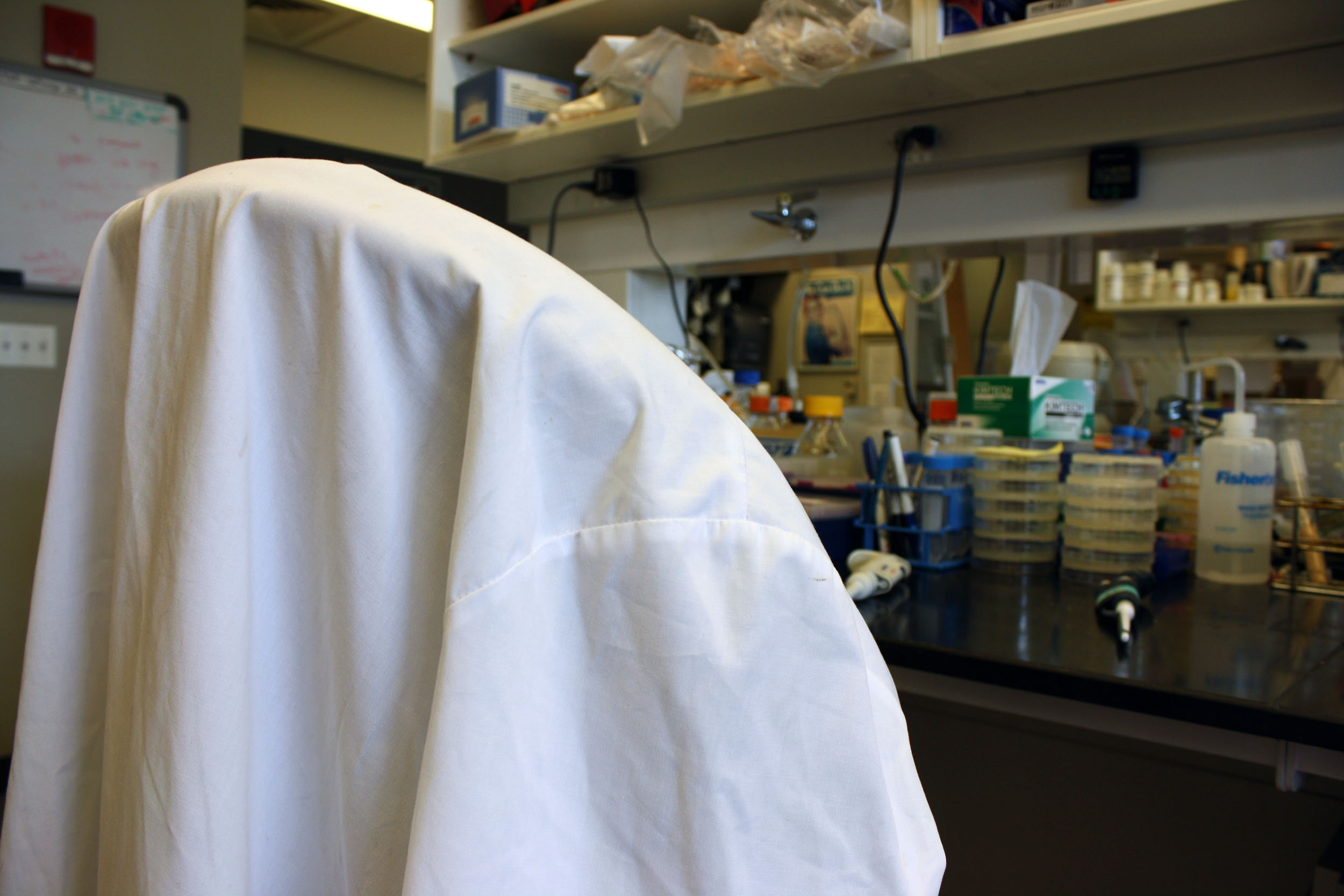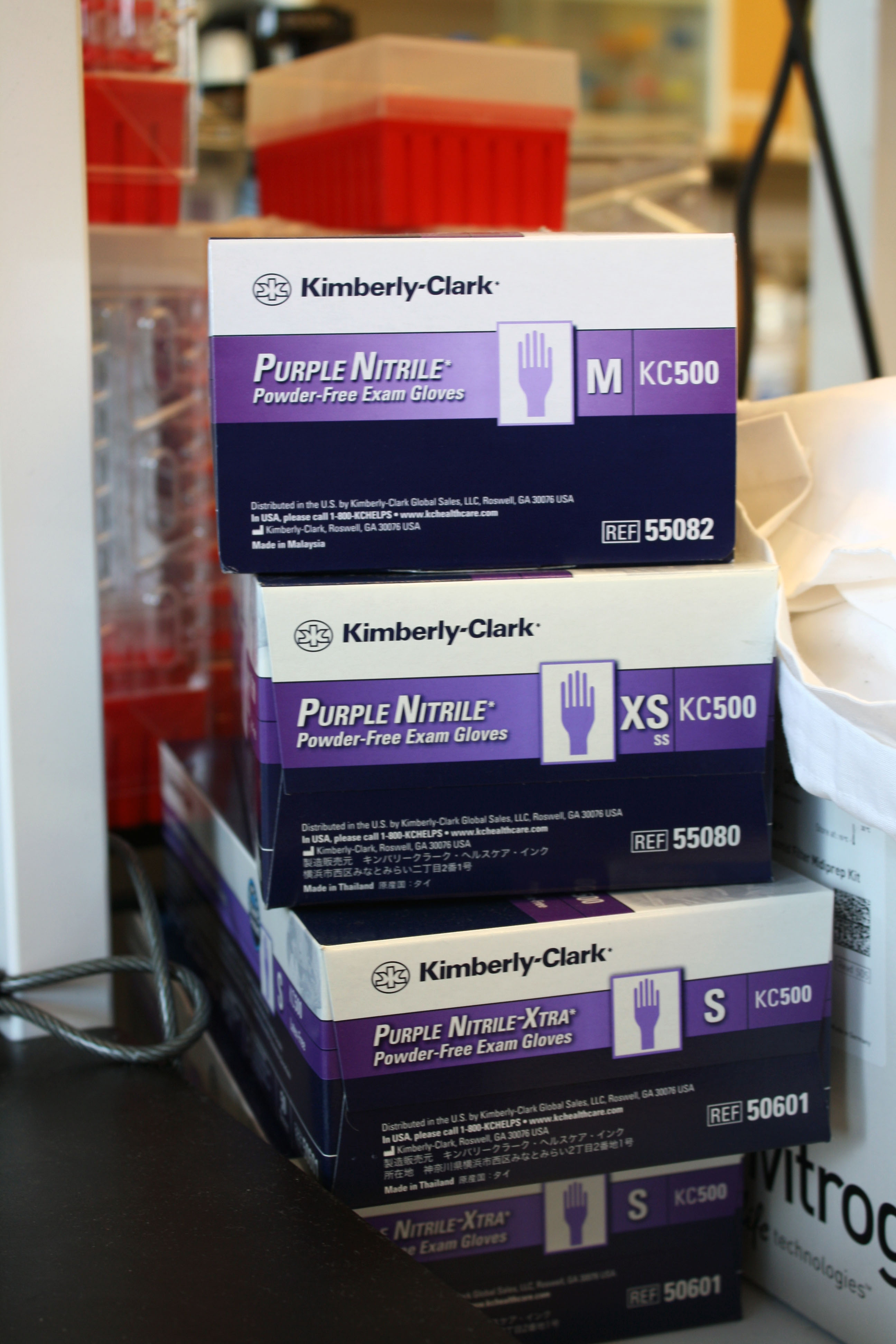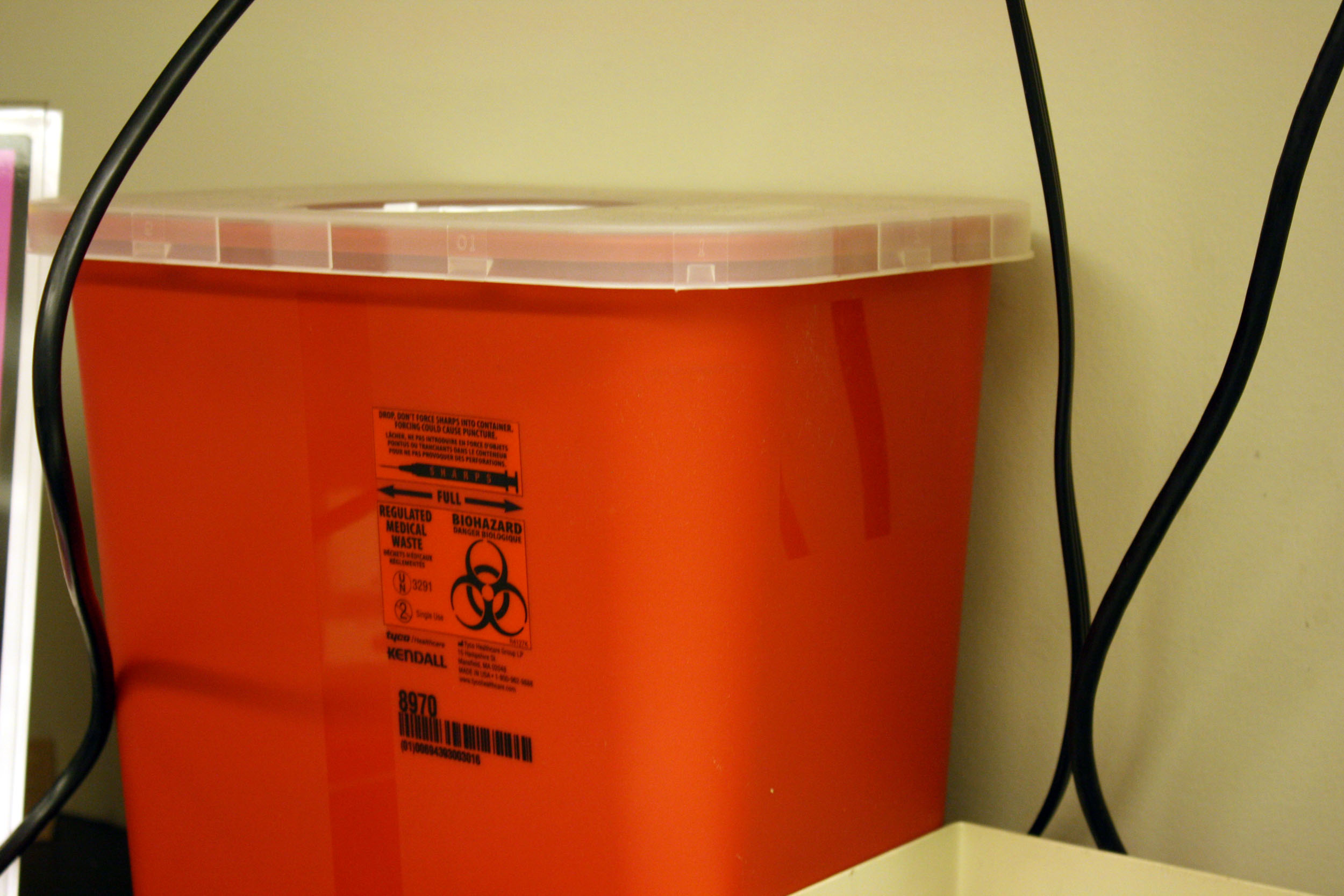Team:Johns Hopkins/Safety
From 2011.igem.org
(→Safety) |
|||
| (25 intermediate revisions not shown) | |||
| Line 1: | Line 1: | ||
{{:Team:Johns_Hopkins/Templates/tpl1}} | {{:Team:Johns_Hopkins/Templates/tpl1}} | ||
<html> | <html> | ||
| - | <div | + | <div id="bigcontent"></html> |
| - | + | ======Safety====== | |
| - | + | [[File:IMG 8931.JPG|thumb|300px|Lab coat]] | |
| - | </html> | + | ''Saccharomyces cerevisiae'', or baker’s yeast, is a low risk chassis commonly used in synthetic biology. The common yeast is widely seen in brewing and baking, and poses low risk to the environment and public under most circumstances. Risk of infection from working with yeast is minimal, as most people have already developed immunity from contact with yeast over their lifetimes. Even when infections do occur, they are not very dangerous and are very treatable. Therefore, this species is not useful for malicious purposes and uses. Despite the already low risks, proper safety procedures are taken; all experiments are being conducted in BSL 1 laboratories, and sterile techniques are followed in addition to the use of gloves and lab coats and other personal protection. Furthermore, our strain of yeast lacks functional pathways for seven essential amino acids including histidine and leucine, making our yeast unlikely to survive in the wild. The genes that we are implementing in our yeast are unlikely to provide a selective advantage for the microorganisms, as the vitamins are not utilized by the yeast. Therefore, our yeast strain would pose minimal risks even if it were released into the environment by design or accident. Overall, our project poses minimal risks to the student researchers, the public, and the environment. |
| - | + | [[File:IMG 8939 2.jpg|thumb|left|250px|Boxes of all sizes of gloves]] | |
| - | + | Other materials used in the project that might be of risks to team members or others in lab include ethidium bromide, which is classified as a mutagen and could be carcinogenic. To protect the members from ethidium bromide, proper personal garments such as nitrile gloves, closed-toe shoes, and lab coats are used. Excess ethidium bromide is neutralized with bleach before being discarded in bioharzard container. The reagent is also placed in secured fridges in the appropriate laboratories to prevent unintentional use. | |
| - | + | ||
| - | + | Another reagent used in the project that might be of danger is hexane. Hexane is of relative low toxicity, though inhalation of high concentration of hexane fume could still be dangerous. Hexane is also extremely flammable. Therefore, use of hexane is restricted to inside the chemical hood and away from any ignition sources. Hexane is discard in specified containers. Hexane is also stored in a secure chemical cabinet to prevent malicious and other unintentional uses. | |
| - | + | ||
Our new BioBrick parts are designed to allow the production of vitamins, which are essential to the human diet, and to facilitate manipulation of DNA in yeast. As such, the use of our new BioBrick parts will not result in the production of toxins or other harmful agents, and we do not believe that our BioBrick parts raise any safety issues. Our yeast, however, do produce ethanol naturally, which the public often intentionally ingest. | Our new BioBrick parts are designed to allow the production of vitamins, which are essential to the human diet, and to facilitate manipulation of DNA in yeast. As such, the use of our new BioBrick parts will not result in the production of toxins or other harmful agents, and we do not believe that our BioBrick parts raise any safety issues. Our yeast, however, do produce ethanol naturally, which the public often intentionally ingest. | ||
| - | Our project complies with Section III-F-6 of the NIH Guidelines for Research Involving Recombinant DNA Molecules | + | Our project complies with Section III-F-6 of the NIH Guidelines for Research Involving Recombinant DNA Molecules (which serve as the U.S. national biosafety regulation for recombinant DNA studies; details can be seen online [http://oba.od.nih.gov/rdna/nih_guidelines_oba.html here] for use of the ''Saccharomyces chassis'' as detailed in Appendix C-III of the NIH Guidelines. As stated by Section III-F-6, our project is exempt from the NIH Guidelines and does not require registration with the Institutional Biosafety Committee. As mentioned above, our experiments are conducted under BSL-1 containment, which is also recommended by the NIH Guidelines. |
| + | |||
| + | The local biosafety groups and review boards include the Johns Hopkins Biosafety Office and the Johns Hopkins Medicine Institutional Review Boards. The Biosafety Office dictates a specific set of rules for a variety of experiments with possible safety concerns, including studies with human tissues and infectious agents. The specific rules can be accessed at the [http://www.hopkinsmedicine.org/hse/biosafety/index.html Johns Hopkins Biosafety Office website]. Our project is registered with the Biosafety Office for experiments with recombinant DNA that are exempt from the NIH Guidelines, and as the lab work does not involve any human components, does not need further IRB approval. While our wet lab work does not need IRB approval, we anticipate that our human practices project, which consists of a survey regarding the public’s knowledge in genetically modified food, will require IRB approval before the project can be initiated. We are currently completing the necessary applications. | ||
| + | [[File:IMG 8939.JPG|thumb|right|300px|Sharps containers are located throughout the laboratories]] | ||
| + | There are several changes we have made to our survey study as a result of our discussion with the Johns Hopkins Medicine IRB. These changes include the exclusion of minor and patients in the hospital (we decided against distribution of survey in the hospital). | ||
| - | + | All members of the team have been properly trained for the portions of experiments they are involved with. The training are administrated through appropriate personnel and channels. Laboratory training were given through graduate students and advisors of respective lab. HIPPA and other IRB training are given through an online channel at Johns Hopkins. | |
| - | + | There are several possible mechanisms we could use to make our systems safer. Similar strategies could be used by other groups as well. They are as follows: | |
| - | + | Unchecked proliferation checking mechanism is a possible mechanism that we could implement into our yeast strain to prevent unrestricted proliferation of the starter cultures for bread, beer, and other yeast products. We could create a genetic switch controlled by a quorum sensing mechanism in yeast, such that an apoptosis gene is transcribed, killing the cells, unless there is a certain critical population of yeast cells present in the immediate vicinity. This would effectively prevent individual spores from escaping and spreading through the environment and make the yeast cells very easy to contain. It would also not require any external substrate, like most antibiotic markers do, and would not negatively affect the competency of the cell, which is important to us as we are trying to optimize yield of a small molecule. | |
| + | In the yeast ''Saccharomyces cerevisiae'', proposed quorum sensing molecules are the aromatic alcohols tryptophol and phenylethanol. Quorum sensing regulates the transition between the solitary yeast form and the filamentous form. The addition of these quorum sensing molecules to yeast cultures causes large changes in gene expression, but how these changes are orchestrated and whether or not this system is conserved in related fungal species is still unknown. What is known is that the transcription factors CAT8 and MIG1 are key transcriptional regulators that control the differential expression of the genes affected by aromatic alcohol communication. Thus, it may be possible to take advantage of this known system and link it to an apoptosis or cytotoxic gene to create a novel bio safety genetic circuit. | ||
| + | |||
<html></div> | <html></div> | ||
| - | + | <br/><br/> | |
</body> | </body> | ||
</html> | </html> | ||
Latest revision as of 00:14, 28 September 2011
Safety
Saccharomyces cerevisiae, or baker’s yeast, is a low risk chassis commonly used in synthetic biology. The common yeast is widely seen in brewing and baking, and poses low risk to the environment and public under most circumstances. Risk of infection from working with yeast is minimal, as most people have already developed immunity from contact with yeast over their lifetimes. Even when infections do occur, they are not very dangerous and are very treatable. Therefore, this species is not useful for malicious purposes and uses. Despite the already low risks, proper safety procedures are taken; all experiments are being conducted in BSL 1 laboratories, and sterile techniques are followed in addition to the use of gloves and lab coats and other personal protection. Furthermore, our strain of yeast lacks functional pathways for seven essential amino acids including histidine and leucine, making our yeast unlikely to survive in the wild. The genes that we are implementing in our yeast are unlikely to provide a selective advantage for the microorganisms, as the vitamins are not utilized by the yeast. Therefore, our yeast strain would pose minimal risks even if it were released into the environment by design or accident. Overall, our project poses minimal risks to the student researchers, the public, and the environment.
Other materials used in the project that might be of risks to team members or others in lab include ethidium bromide, which is classified as a mutagen and could be carcinogenic. To protect the members from ethidium bromide, proper personal garments such as nitrile gloves, closed-toe shoes, and lab coats are used. Excess ethidium bromide is neutralized with bleach before being discarded in bioharzard container. The reagent is also placed in secured fridges in the appropriate laboratories to prevent unintentional use.
Another reagent used in the project that might be of danger is hexane. Hexane is of relative low toxicity, though inhalation of high concentration of hexane fume could still be dangerous. Hexane is also extremely flammable. Therefore, use of hexane is restricted to inside the chemical hood and away from any ignition sources. Hexane is discard in specified containers. Hexane is also stored in a secure chemical cabinet to prevent malicious and other unintentional uses.
Our new BioBrick parts are designed to allow the production of vitamins, which are essential to the human diet, and to facilitate manipulation of DNA in yeast. As such, the use of our new BioBrick parts will not result in the production of toxins or other harmful agents, and we do not believe that our BioBrick parts raise any safety issues. Our yeast, however, do produce ethanol naturally, which the public often intentionally ingest.
Our project complies with Section III-F-6 of the NIH Guidelines for Research Involving Recombinant DNA Molecules (which serve as the U.S. national biosafety regulation for recombinant DNA studies; details can be seen online [http://oba.od.nih.gov/rdna/nih_guidelines_oba.html here] for use of the Saccharomyces chassis as detailed in Appendix C-III of the NIH Guidelines. As stated by Section III-F-6, our project is exempt from the NIH Guidelines and does not require registration with the Institutional Biosafety Committee. As mentioned above, our experiments are conducted under BSL-1 containment, which is also recommended by the NIH Guidelines.
The local biosafety groups and review boards include the Johns Hopkins Biosafety Office and the Johns Hopkins Medicine Institutional Review Boards. The Biosafety Office dictates a specific set of rules for a variety of experiments with possible safety concerns, including studies with human tissues and infectious agents. The specific rules can be accessed at the [http://www.hopkinsmedicine.org/hse/biosafety/index.html Johns Hopkins Biosafety Office website]. Our project is registered with the Biosafety Office for experiments with recombinant DNA that are exempt from the NIH Guidelines, and as the lab work does not involve any human components, does not need further IRB approval. While our wet lab work does not need IRB approval, we anticipate that our human practices project, which consists of a survey regarding the public’s knowledge in genetically modified food, will require IRB approval before the project can be initiated. We are currently completing the necessary applications.
There are several changes we have made to our survey study as a result of our discussion with the Johns Hopkins Medicine IRB. These changes include the exclusion of minor and patients in the hospital (we decided against distribution of survey in the hospital).
All members of the team have been properly trained for the portions of experiments they are involved with. The training are administrated through appropriate personnel and channels. Laboratory training were given through graduate students and advisors of respective lab. HIPPA and other IRB training are given through an online channel at Johns Hopkins.
There are several possible mechanisms we could use to make our systems safer. Similar strategies could be used by other groups as well. They are as follows:
Unchecked proliferation checking mechanism is a possible mechanism that we could implement into our yeast strain to prevent unrestricted proliferation of the starter cultures for bread, beer, and other yeast products. We could create a genetic switch controlled by a quorum sensing mechanism in yeast, such that an apoptosis gene is transcribed, killing the cells, unless there is a certain critical population of yeast cells present in the immediate vicinity. This would effectively prevent individual spores from escaping and spreading through the environment and make the yeast cells very easy to contain. It would also not require any external substrate, like most antibiotic markers do, and would not negatively affect the competency of the cell, which is important to us as we are trying to optimize yield of a small molecule.
In the yeast Saccharomyces cerevisiae, proposed quorum sensing molecules are the aromatic alcohols tryptophol and phenylethanol. Quorum sensing regulates the transition between the solitary yeast form and the filamentous form. The addition of these quorum sensing molecules to yeast cultures causes large changes in gene expression, but how these changes are orchestrated and whether or not this system is conserved in related fungal species is still unknown. What is known is that the transcription factors CAT8 and MIG1 are key transcriptional regulators that control the differential expression of the genes affected by aromatic alcohol communication. Thus, it may be possible to take advantage of this known system and link it to an apoptosis or cytotoxic gene to create a novel bio safety genetic circuit.
 "
"




